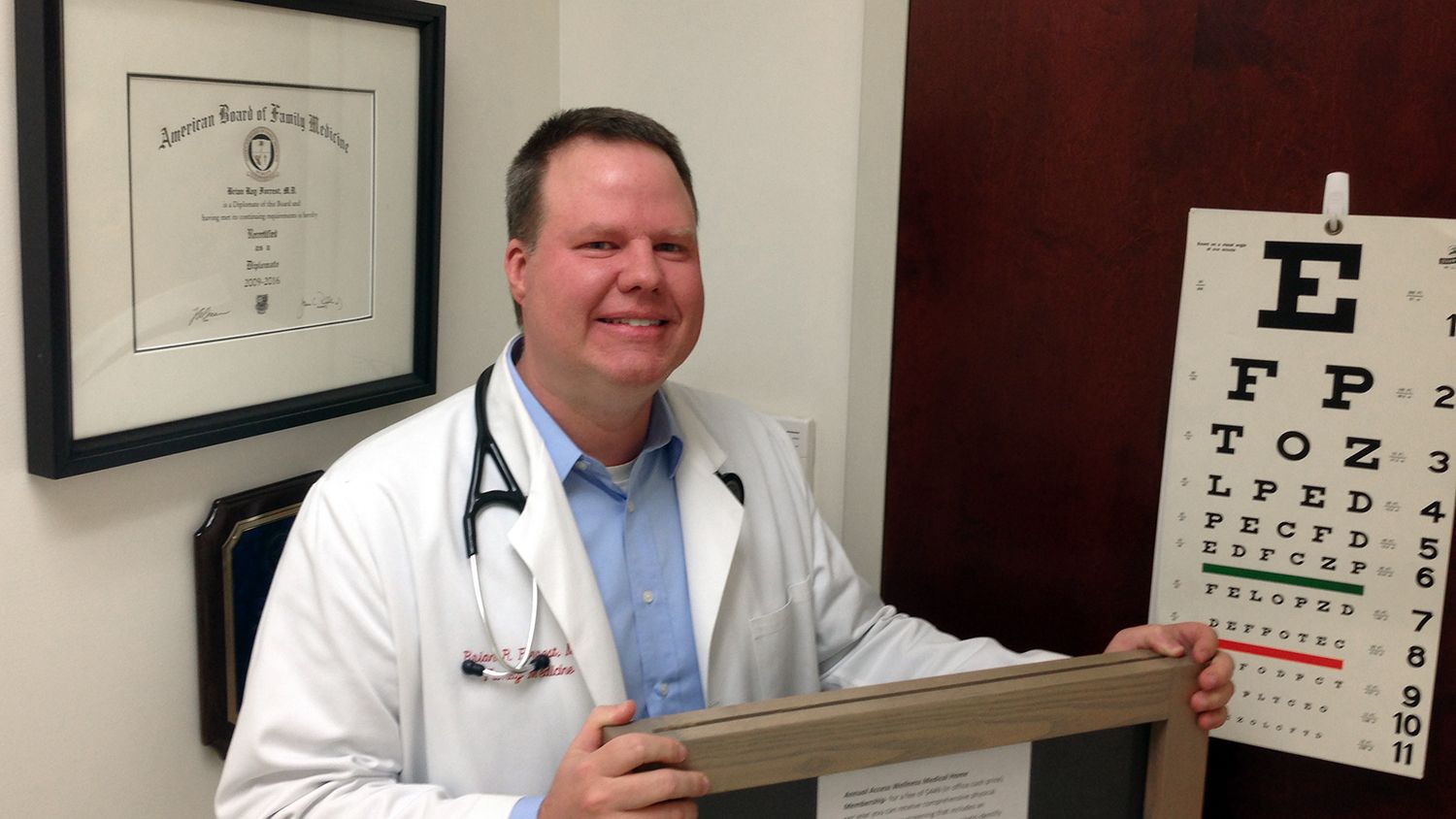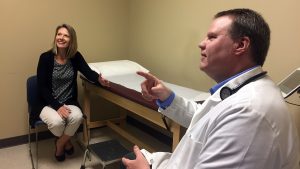“Change-Maker In Medicine”: CALS Alum Brian Forrest, M.D.

When he was sitting in class at CALS, Brian Forrest didn’t yet have a plan to revolutionize primary care medicine.
But fast forward 17 years and he’s done exactly that. After earning his undergraduate degree from CALS and his MD from the University of North Carolina, Forrest founded Access Healthcare in Apex as a direct primary care doctor’s office. Instead of charging patients through insurance, Forrest offers his complete array of medical services for a flat monthly fee.
It was a wildly risky experiment. At the end of the first week, Forrest had $72 left in his checking account. But it paid off. Now he continues to practice medicine while also serving as an advisor to physicians across the country looking to switch to the direct primary care model. Medical Economics Magazine recently featured him as their 2018 “change-maker” in medicine.
His story is an example, Forrest says, of what vision and determination — and a CALS education — can lead to.
What is a direct primary care system?

It’s like a gym membership for your primary care. If you went to a gym and started lifting weights, they wouldn’t charge you for each time you lifted. But when you go into a regular doctor’s office, you have a whole fleet of people who write down every little test you get done. It costs more to keep track of that than to not keep track of that and essentially include everything in your “membership.” I maintain a low-overhead model where we charge a monthly fee — so if you need a lab test, an EKG, anything, I can do that there in the office.
It also sheds a lot of transparency on what medical costs really are. A lot of consumers assume lab tests are really expensive, but a lot of times I can run a test for about a dollar at the exact same lab that charges $180 if you go through insurance. When you cut out the insurance billing portion of it, the cost comes down enormously. We’re trying to make health care affordable.
When you started using this model, why did you feel that was important? What inspired you to create it? Why is it still important now and into the future?
I felt like people who didn’t have health insurance were really getting mistreated by the system, because they were having to pay higher prices than people with insurance. We had a lot of patients who couldn’t afford to come in. I wanted all patients to have better access to primary care.
And the selfish motivation was that working the typical way was just not fun for me. I was working at a practice where I had to see 63 patients in one day. Everything was volume-driven, and you couldn’t spend your time taking care of patients the way you wanted to. I enjoy seeing patients and spending time with them.
Tell me about the experience of launching a new practice model.
It’s exciting! I’d like to take credit for inventing it, but it was more discovering that it works. I essentially took a bunch of things I thought I might work and did an experiment. Every year after that I have looked at what worked and what didn’t each January and made changes for the new year. Now, we manage a national network of practices following the same model.
Was that risky?
Absolutely. Everybody I knew tried to talk me out of it. Many people around me said it was crazy and that it wasn’t going to work. But I felt like I was being called to do it this way, and I’ve never been one to shy away from a risk if it seemed like the right thing to do..
Did it ever look like you were going to fail?
We opened on a Monday — April Fool’s Day, intentionally, because everyone said it wasn’t going to work. From Monday through Wednesday that week, we saw zero patients. I was sweating bullets pretty heavy. On Thursday I went into one of the exam rooms and lay down on one of the tables and told my staff, “Come knock if any patients walk in, I’m going to go in here and mope for a while.” And then about 30 minutes later, she knocked.
We had the prices posted, trying to be very transparent, and when the very first patient walked in, I told him it was half off. I still have that $20 bill — and he’s still one of our patients.
Within a week or two, we were seeing 1-2 patients a day. Then the local paper did an article on us in July, and we had 200 patients call the next day to schedule future appointments.
Over time, we hired more doctors and the rest is history. Now we’ve had physicians fly in from all over the country to spend the day with us in Apex and see how this works. We have annual conferences, and we have major employers adopting this as their primary health care plan coupled with traditional insurance for other specialists and hospitalization.
Even the initial employee I hired still works with me 17 years later. I didn’t tell her when she started that we might be bankrupt in six months, but now she helps train other doctors around the country how to do this. There are practices now in 33 states that we’ve helped convert to this model.
What advice do you have to CALS students looking to be trailblazers in their field?
Seek out and take advantage of leadership opportunities available at NC State. There are so many great faculty advisors and department people there who can give them guidance based on experience. Taking advantage of those opportunities and having the faith to try ideas people have not before were the things that I think helped me be successful more than anything else.
Discover more amazing CALS alumni!
[button]AgPack Strong stories[/button]
- Categories:


